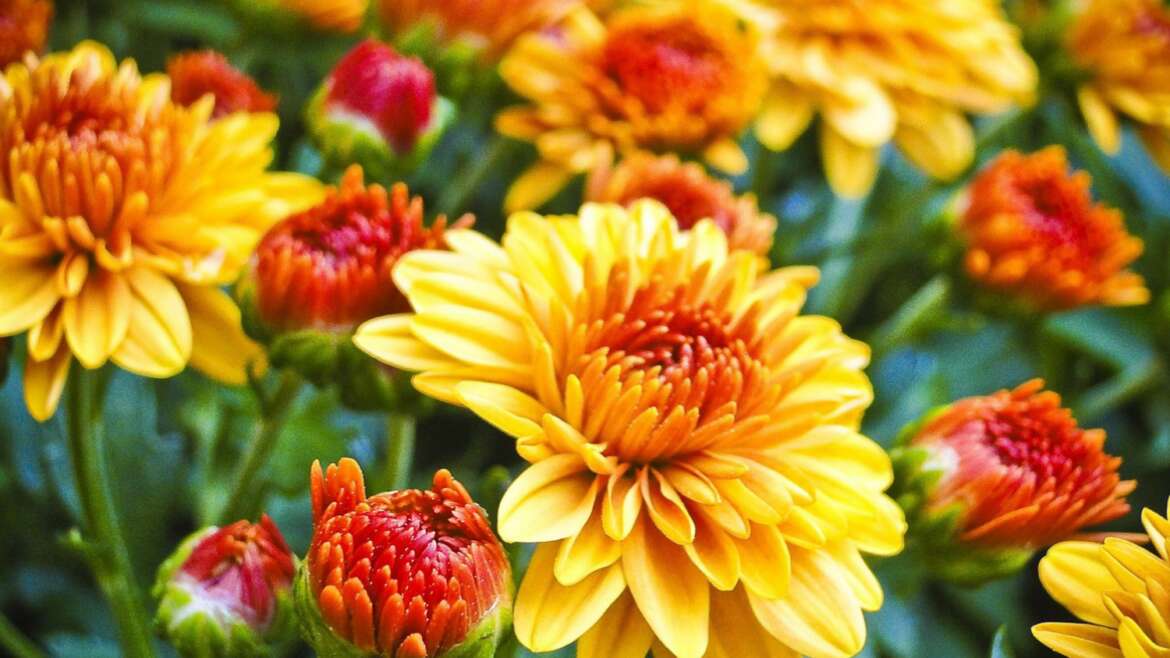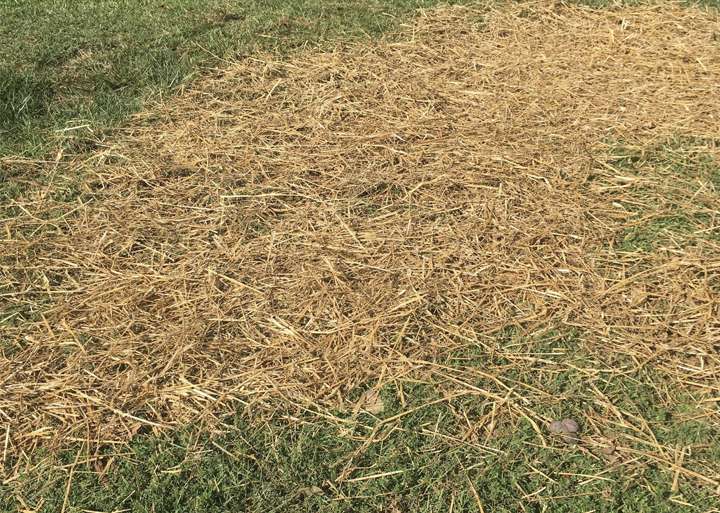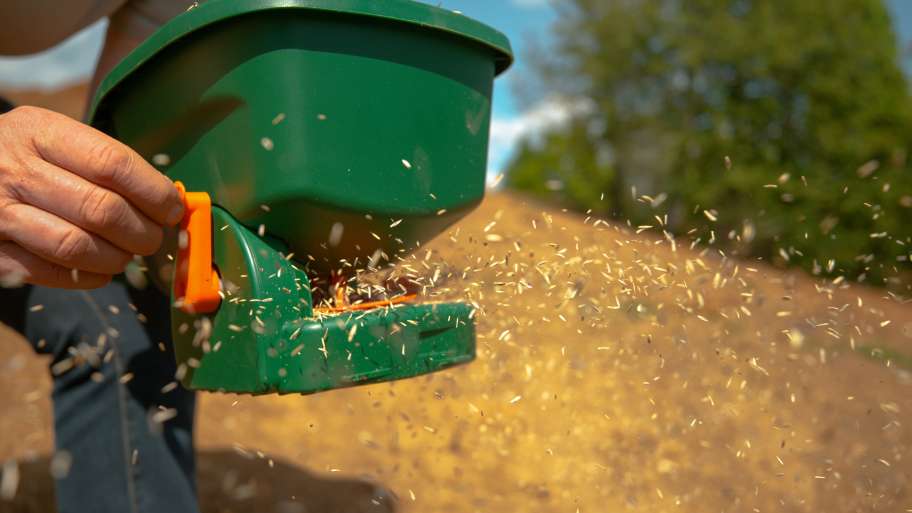Nothing says fall like Mums! Mums have been cultivated for over 2500 years and continue to increase in popularity. There are now over 5000 varieties in cultivation. Through hybridization, many flower forms are available such as daisy, pompon, cushion, buttons, decorative spiders, and spoon-petal. They are also available in any color except blue.
Sadly, on occasion I see blue mums in box stores and grocery chains. These are colored with florist spray paint. They do not flower in blue. There are some other flowers colored with spray paint available at times.
Mums are sensitive to length of day and night. As the length of daylight becomes shorter in the fall, the Mum is triggered into developing buds and flowering. Different varieties take different amounts of light to develop blooms. Hence, not all mums bloom at one time. Also, growers can control light and affect when mums bloom. Growers use various methods to control the light on plants, thus bringing them into bloom throughout the year. You see them in florist shops at all times for sale. Mums can be enjoyed in the pot, then planted in the ground!
The Mum leaves are dark green and fragrant. Animals normally leave fragrant plants alone so you don’t have to worry about deer or other animals eating your Mums. Mums lend themselves to do well as bedding plants, hanging baskets, or containers.
Mums should be planted in fertile, well-drained soil. They like moist, but not soggy soil. Good drainage is necessary for survival over winter. If the ground is wet and freezes, the Mum roots are likely to be killed.
Once established in the ground, it should not be necessary to water Mums. Newly planted mums should be watered two to three times per week. And mums in hanging baskets and containers will need to be watered daily.
When planting mums, use a general purpose fertilizer such as 10-15-10. You want the middle number to be high. That number indicates the phosphate in the fertilizer which helps in root development. Planted in the fall, you may not need any fertilizer. Containers will likely need fertilizer every two to three months during the growing season.
Mums should be pinched once or twice in the spring and summer. This encourages development of a compact bushy plant. Left on their own, mums will be tall and leggy. When new growth reaches 6 to 8 inches, pinch them back by at least half. When they grow another 6 to 8 inches repeat the pinching process. You can stop pinching toward the end of the summer. The plant will be ceasing growth and starting to set flower buds preparing to flower.
Mums in Central Virginia need little or no protection in order to survive. The main point is to make sure the root ball doesn’t freeze. If the container or ground is soggy wet, and you get a hard freeze, the plant well may not survive. In colder Northern climates, I would recommend removing the dead tops and covering with a layer of straw or mulch. The dead tops should be removed regardless of where you are located.
A little thoughtful care and your mums should last for many years.




